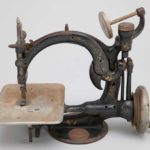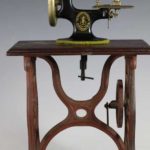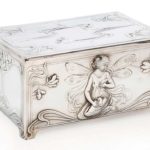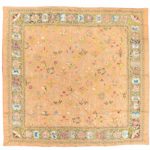Sewing Machines: Charles Fredrick Wiesenthal, a German-born engineer working in England was awarded the first British patent for a mechanical device to aid the art of sewing, in 1755. His invention consisted of a double pointed needle with an eye at one end.
In 1885 Singer patented the Singer Vibrating Shuttle sewing machine, which used Allen B. Wilson’s idea for a vibrating shuttle and was a better lockstitcher than the oscillating shuttles of the time. Millions of the machines, perhaps the world’s first really practical sewing machine for domestic use, were produced until finally superseded by rotary shuttle machines in the 20th century. Sewing machines continued being made to roughly the same design—with more lavish decoration—until well into the 1900s.
The first electric machines were developed by Singer Sewing Co. and introduced in 1889. By the end of the First World War, Singer was offering hand, treadle and electric machines for sale. At first, the electric machines were standard machines with a motor strapped on the side, but as more homes gained power, they became more popular and the motor was gradually introduced into the casing. Reference: Wikipedia
Below are some examples and price guides of Art Nouveau / early 20th century sewing machines including a Muller machine and a Singer miniature sewing machine.
Wilcox & Gibbs sewing machine, treadle type, last patent: August 28th, 1894, machine No. 477373.
Reference: Museum of Applied Art and Sciences
MÜLLER sewing machine, No. 20, nickel-plated handwheel, Made in Germany, art nouveau decor, minimally scratches on the paintwork, otherwise good condition, working, 17 x 14 cm
Sold for €70 at Ladenburger Spielzeugauktion GmbH in 2018
Early 20th. Century Singer miniature sewing machine with Very Rare cast iron and wood top base. Salesman sample size. Having good clear decals on black finish and original wooden crank handle. Sewing machine approx. 6.5″t by 6″w, base approx. 10″t by 9.5″w 5.5″d. Overall good age
Sold for $425 at Premier Auction Galleries in 2019




